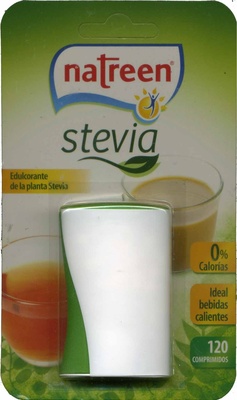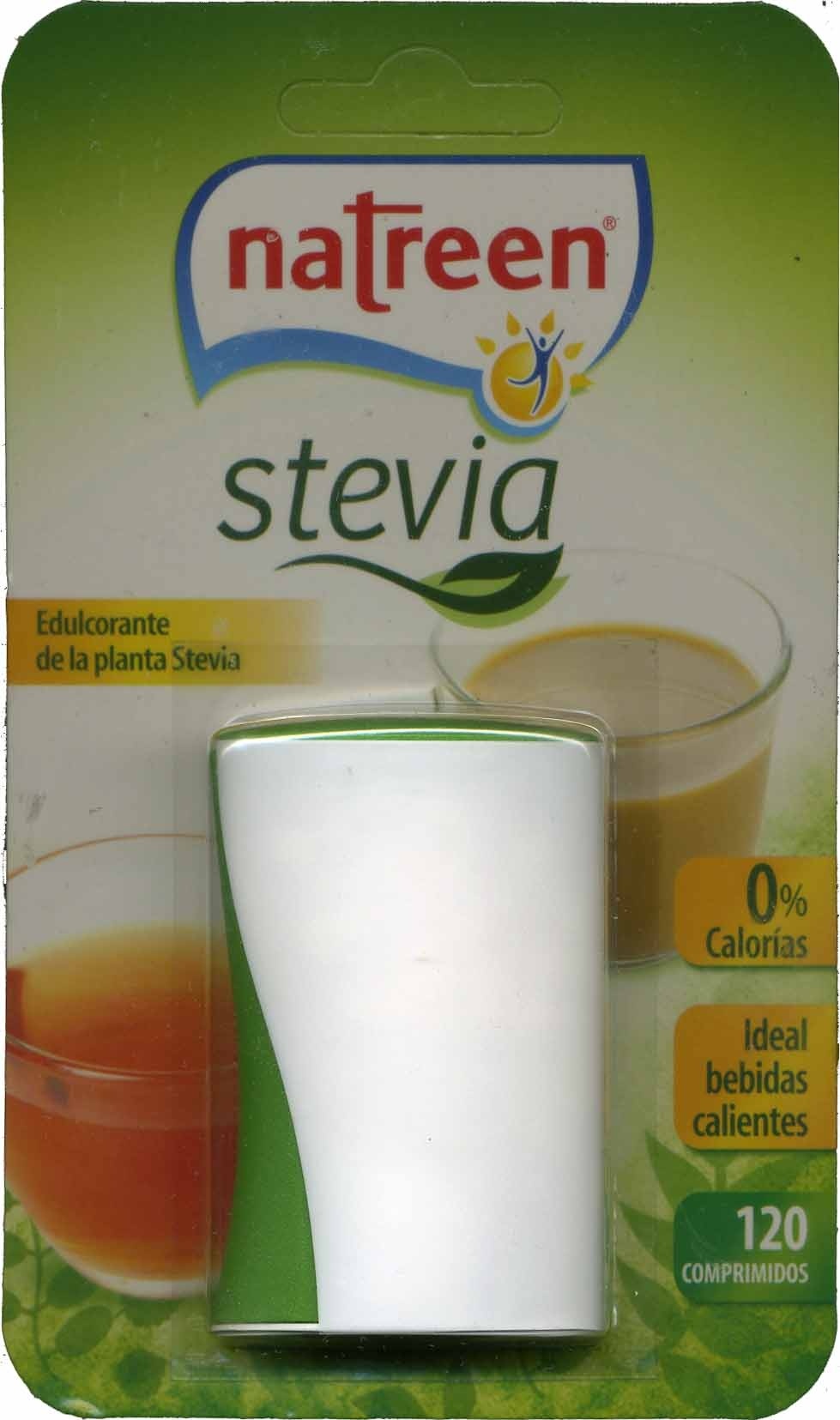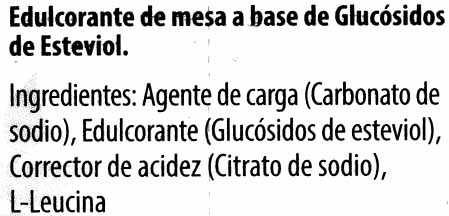Stevia comprimidos - Natreen - 7 g (120 x 0,06 g)
This product page is not complete. You can help to complete it by editing it and adding more data from the photos we have, or by taking more photos using the app for Android or iPhone/iPad. Thank you!
×
Barcode: 8410091104921 (EAN / EAN-13)
Common name: Edulcorante de mesa en comprimidos a base de glucósidos de esteviol proveniente de Stevia rebaudiana
Quantity: 7 g (120 x 0,06 g)
Packaging: Blister, es:Caja de plástico
Brands: Natreen
Categories: Plant-based foods and beverages, Plant-based foods, Sweeteners, Food additives, Stevia and their products, Sugar substitutes, Natural sugar substitutes, Steviol glycosides, Tabletop sweeteners
Labels, certifications, awards: Vegetarian, Vegan
Traceability code: FABRICANTE Y ENVASADOR:, DESCONOCIDO, DISTRIBUIDOR:, D.E MASTER BLENDERS 1753 N.V.
Link to the product page on the official site of the producer: http://natreenstevia.es
Stores: Hipercor
Countries where sold: Spain
Matching with your preferences
Environment
Packaging
Transportation
Report a problem
Data sources
Product added on by javichu
Last edit of product page on by thaialagata.
Product page also edited by musarana, packbot.








